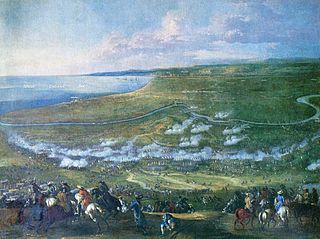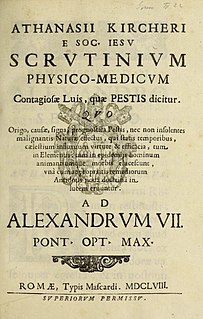Related Research Articles
1652 (MDCLII) was a leap year starting on Monday of the Gregorian calendar and a leap year starting on Thursday of the Julian calendar, the 1652nd year of the Common Era (CE) and Anno Domini (AD) designations, the 652nd year of the 2nd millennium, the 52nd year of the 17th century, and the 3rd year of the 1650s decade. As of the start of 1652, the Gregorian calendar was 10 days ahead of the Julian calendar, which remained in localized use until 1923.

1680 (MDCLXXX) was a leap year starting on Monday of the Gregorian calendar and a leap year starting on Thursday of the Julian calendar, the 1680th year of the Common Era (CE) and Anno Domini (AD) designations, the 680th year of the 2nd millennium, the 80th year of the 17th century, and the 1st year of the 1680s decade. As of the start of 1680, the Gregorian calendar was 10 days ahead of the Julian calendar, which remained in localized use until 1923.

1602 (MDCII) was a common year starting on Tuesday of the Gregorian calendar and a common year starting on Friday of the Julian calendar, the 1602nd year of the Common Era (CE) and Anno Domini (AD) designations, the 602nd year of the 2nd millennium, the 2nd year of the 17th century, and the 3rd year of the 1600s decade. As of the start of 1602, the Gregorian calendar was 10 days ahead of the Julian calendar, which remained in localized use until 1923.

1682 (MDCLXXXII) was a common year starting on Thursday of the Gregorian calendar and a common year starting on Sunday of the Julian calendar, the 1682nd year of the Common Era (CE) and Anno Domini (AD) designations, the 682nd year of the 2nd millennium, the 82nd year of the 17th century, and the 3rd year of the 1680s decade. As of the start of 1682, the Gregorian calendar was 10 days ahead of the Julian calendar, which remained in localized use until 1923.

1676 (MDCLXXVI) was a leap year starting on Wednesday of the Gregorian calendar and a leap year starting on Saturday of the Julian calendar, the 1676th year of the Common Era (CE) and Anno Domini (AD) designations, the 676th year of the 2nd millennium, the 76th year of the 17th century, and the 7th year of the 1670s decade. As of the start of 1676, the Gregorian calendar was 10 days ahead of the Julian calendar, which remained in localized use until 1923.

Year 1562 (MDLXII) was a common year starting on Thursday of the Julian calendar, the 1562nd year of the Common Era (CE) and Anno Domini (AD) designations, the 562nd year of the 2nd millennium, the 62nd year of the 16th century, and the 3rd year of the 1560s decade.

Athanasius Kircher was a German Jesuit scholar and polymath who published around 40 major works, most notably in the fields of comparative religion, geology, and medicine. Kircher has been compared to fellow Jesuit Roger Joseph Boscovich and to Leonardo da Vinci for his enormous range of interests, and has been honoured with the title "Master of a Hundred Arts". He taught for more than 40 years at the Roman College, where he set up a wunderkammer. A resurgence of interest in Kircher has occurred within the scholarly community in recent decades.
The year 1652 in science and technology involved some significant events.

John Greaves was an English mathematician, astronomer and antiquarian.
Events from the year 1652 in England.
The decade of the 1680s in archaeology involved some significant events.
The decade of the 1660s in archaeology involved some significant events.
The decade of the 1650s in archaeology involved some significant events.
The decade of the 1640s in archaeology involved some significant events.
Events from the 1600s in England. This decade marks the end of the Elizabethan era with the beginning of the Jacobean era and the Stuart period.
John Greaves (1602–1652) was an English mathematician and antiquary.

David Origanus or David Tost was a German astronomer and professor for Greek language and Mathematics at the Viadrina University in Frankfurt (Oder), where he had also studied.
Jacobus is a masculine first name, which is a variant of Jacob, Jack and James. The name may refer to:

Scrutinium Physico-Medicum Contagiosae Luis, Quae Pestis Dicitur is a 1658 work by the Jesuit scholar Athanasius Kircher, containing his observations and theories about the bubonic plague that struck Rome in the summer of 1656. Kircher was the first person to view infected blood through a microscope, and his observations are described in the book. The work was printed on the presses of Vitale Mascardi and dedicated to Pope Alexander VII.
References
- ↑ "John Greaves - English mathematician, astronomer, and antiquary". Encyclopedia Britannica. Retrieved 17 May 2017.
- ↑ "Athanasius Kircher". Yale University Library. Retrieved 20 June 2017.